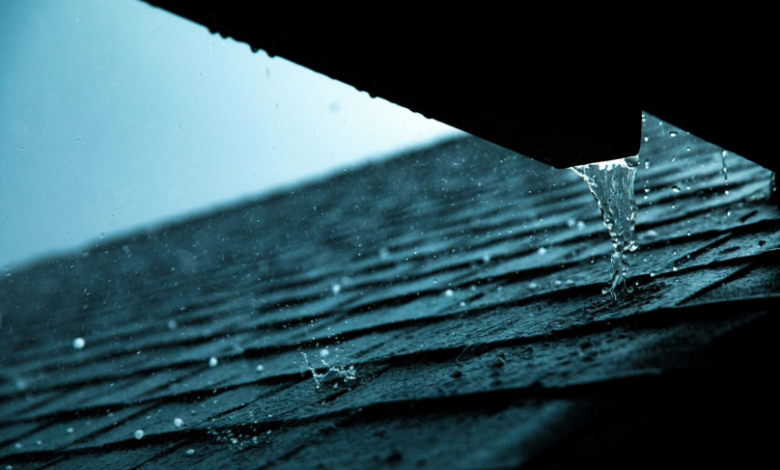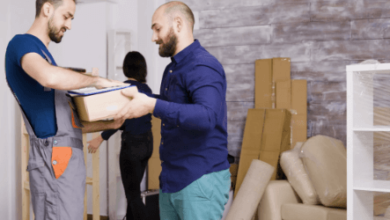Preparing Your Gymea Home’s Plumbing for Heavy Rain and Storms

Sydney’s southern suburbs often experience unpredictable weather, and Gymea is no exception. While the area is admired for its leafy streets and relaxed atmosphere, it can also be prone to drainage issues when storms hit. The combination of sloped blocks, older homes, and ageing pipes makes preparation more than just routine maintenance. It becomes a safeguard for the property.
Rainwater can overwhelm poorly maintained drains within minutes, leading to flooding, sewer backups, and damage to walls or flooring. A proactive inspection before the storm season is often the difference between a quick fix and a costly repair. Local homeowners who want reliable protection usually call a trusted plumber in Gymea for regular maintenance and storm readiness checks.
Ignoring plumbing preparation is like leaving a window open in a downpour. The damage may not appear immediately, but it builds up over time. Each year, many Sydney homes face expensive repairs because storm drains or pipes were left unchecked. Preventive care, especially before summer storms, keeps systems flowing freely and protects both structure and comfort.
Common Plumbing Issues During Storm Season
Heavy rain can expose weaknesses in any plumbing system. Some problems develop quietly, while others appear suddenly during downpours. Homeowners in Gymea should be aware of several recurring issues:
| Common Issue | Description | Possible Impact |
| Blocked drains and gutters | Leaves, twigs, and dirt clog outdoor drains, preventing water flow. | Overflow, yard flooding, and water entering garages or basements. |
| Stormwater system overflow | Old or undersized systems struggle with heavy rainfall. | Water backing up into garden areas or driveways. |
| Sewer backups | Excess rainwater seeps into sewer lines through cracks or faulty joints. | Unpleasant odours, health hazards, and interior water damage. |
| Roof leaks and flashing damage | Loose tiles or worn flashing allow rain to seep in. | Stains, ceiling damage, and electrical risks. |
These problems tend to worsen in areas with mature trees or uneven ground, both of which are common around Gymea. A single clogged drain during a storm can create a chain reaction, forcing water to find alternative paths into your property. The result is often messy and expensive.
Routine gutter cleaning and drain inspections can help, but some issues lie deeper underground. Tree roots often invade older clay pipes, gradually restricting water flow. Once a blockage forms, even moderate rainfall can trigger overflows. Homeowners who notice slow-draining outdoor areas or strange gurgling sounds after rain should take it as a warning sign.
Preventative Plumbing Maintenance Before the Storms
Preparing a plumbing system before the first storm arrives can save thousands in repair costs later. The key is consistency. Many homeowners only call for help after flooding or drainage problems have already occurred, yet a short inspection before the season can eliminate most risks.
Here are a few practical maintenance steps:
- Clean gutters and downpipes regularly. Remove leaves and debris to allow water to drain quickly.
- Inspect stormwater drains for blockages. Lift grates and clear any built-up sediment.
- Test outdoor drainage pits. Pour water into surface drains to confirm it flows away freely.
- Check sump pumps. Ensure they switch on automatically and that discharge pipes are unobstructed.
- Inspect outdoor taps and hoses. Look for leaks that could add unnecessary water to the system during heavy rain.
A professional plumber can also perform more detailed checks, including CCTV drain inspections. This method helps locate hidden obstructions or cracks in underground pipes that often go unnoticed until it is too late.
A local plumbing expert familiar with Gymea’s residential layouts will know the common weak spots. For example, older homes with original terracotta pipes may need upgrades to PVC to prevent root intrusion. Properties near bushland or sloped streets may require additional drainage channels or pits.
It is also wise to schedule maintenance before the peak storm months, typically from November to March. A single appointment can cover both preventive cleaning and system assessment. Once done, homeowners gain peace of mind knowing their property is ready to handle what nature sends their way.
Protecting Indoor Plumbing During Heavy Rain
Outdoor flooding is the most visible threat, but indoor plumbing can also be affected. When heavy rainfall increases pressure on drainage systems, internal pipes and fixtures sometimes react in surprising ways. Water can backflow, gurgle through sinks, or even leak from connections not built for sudden surges.
Homeowners can take several precautions to protect indoor plumbing:
- Install a backflow prevention device: This small but effective fitting stops dirty water from reversing direction into clean water lines. It is particularly useful in areas prone to flooding.
- Inspect internal drains and traps: Water that drains slowly during rain could indicate a shared blockage between indoor and outdoor systems.
- Seal entry points around pipes: Gaps where pipes enter walls or floors should be sealed with appropriate materials to prevent water ingress.
- Check appliance hoses: Washing machines, dishwashers, and hot water systems often operate under stress when water pressure fluctuates. Replace old hoses to avoid bursts.
- Relocate valuables or electrical items: If your laundry or storage area is on a lower level, keep appliances elevated during heavy storms.
Backflow and slow drainage are two signs often ignored until a storm reveals the issue. The key is to view plumbing as a connected system rather than a collection of separate parts. A blocked outdoor pipe affects indoor drainage just as much as a leaking tap adds pressure to outdoor systems. Everything flows together, so one weak point can disrupt the entire system.
A well-maintained plumbing network handles rain with ease, keeping both the home and its occupants dry and safe.
See also: How Local Home Design Is Shaping Modern Australian Living
What to Do During a Storm
Even with preparation, storms can still surprise homeowners. Acting quickly and calmly reduces potential damage. Below is a short reference checklist for use during heavy rainfall:
| Situation | Recommended Action |
| Flooding near outdoor drains | Clear visible debris if safe to do so, and redirect water away using sandbags or garden soil. |
| Water entering from doors or windows | Seal gaps temporarily with towels or plastic sheets until rain stops. |
| Sudden drops in water pressure | Avoid using multiple water appliances at once to reduce stress on the system. |
| Sinks or toilets bubbling | Refrain from flushing or draining water until the storm subsides. It may indicate sewer overload. |
| Suspected pipe burst | Turn off the main water valve immediately and call a licensed plumber. |
Preparation should always include keeping emergency contacts easily accessible. Write down the details of your trusted local plumber and store them in a visible place. A quick call can prevent a small issue from escalating into significant water damage.
Homeowners who travel frequently or manage rental properties can also consider installing smart water sensors. These devices detect leaks or changes in moisture levels and send alerts directly to a phone, providing real-time protection even when you are away.
After the Storm: Inspecting and Repairing Damage
Once the rain has eased and the skies have cleared, it is tempting to assume that everything has returned to normal. Yet the hours and days following a heavy storm are when most plumbing damage becomes visible. The water that disappears from sight may have caused stress on joints, pipes, and foundations. A careful post-storm inspection can prevent small problems from developing into major repairs.
Start outdoors. Check for pooling around garden drains, driveways, and patios. Water that lingers long after rain usually signals poor drainage or partial blockages underground. Lift any visible grates and look for debris washed in during the storm. If the pit fills with water faster than it drains, the system may be overloaded or damaged.
Next, examine gutters and downpipes. Heavy rain can shift gutters out of alignment or loosen brackets. Overflow stains on walls often reveal where water escaped during the downpour. A quick realignment or resealing prevents future leaks.
Indoors, listen for unfamiliar noises when taps or toilets are used. Gurgling sounds from drains often mean trapped air caused by a blockage further down the line. Inspect walls and ceilings for new damp patches or peeling paint. Even minor leaks behind walls can become mould problems if left unattended.
If you suspect hidden damage, it is wise to book a professional assessment. A licensed plumber can perform a pressure test or use a drain camera to pinpoint faults. Detecting damage early reduces the cost of repairs and prevents future flooding during the next storm cycle.
Why Local Expertise Matters

Storm-related plumbing issues are rarely identical from one suburb to another. Gymea’s geography, soil type, and mix of older and newer homes present a distinct set of challenges. A local expert who works regularly in the area understands these conditions better than someone unfamiliar with the region.
Hiring a local plumber familiar with Gymea means working with someone who knows where water naturally flows after rain, which streets have poor stormwater capacity, and how older drainage systems perform under pressure. Local specialists also respond faster during emergencies, saving valuable time when flooding or leaks occur.
They can also recommend preventative solutions specific to the neighbourhood. For example, homes near Gymea Bay may benefit from additional stormwater pits to manage runoff, while properties on elevated blocks may need better downpipe distribution to avoid erosion. Knowledge of local council regulations also helps ensure that upgrades and repairs comply with area standards.
Choosing a plumber in Gymea also supports the community. Local tradespeople rely on reputation, so they maintain high-quality workmanship and offer follow-up support. Homeowners gain both reliability and accountability, knowing help is just a short drive away when the weather turns unpredictable.
How Can You Keep Your Gymea Home Safe When Storms Hit?
Storms are inevitable, but the damage they cause does not have to be. Homes in Gymea, with their mix of charming older structures and modern renovations, can remain safe with consistent plumbing care. Preparation begins long before clouds appear.
Clearing gutters, inspecting drains, testing pumps, and repairing leaks are small efforts that prevent large-scale problems. After each storm, inspections should become routine. The goal is not just to fix what is broken but to strengthen the system for future events.
Local expertise plays an important role here. A trusted plumber who knows the area’s conditions can offer tailored advice, ensuring every home is ready for whatever Sydney’s storm season brings. A few hours of preparation can spare weeks of inconvenience, expense, and stress.
Every household benefits from being proactive. Schedule an inspection before the next storm forecast, and keep the contact details of a reliable plumber in Gymea within reach. When the rain starts to pour, you can rest easy knowing your home’s plumbing is ready to handle it.



